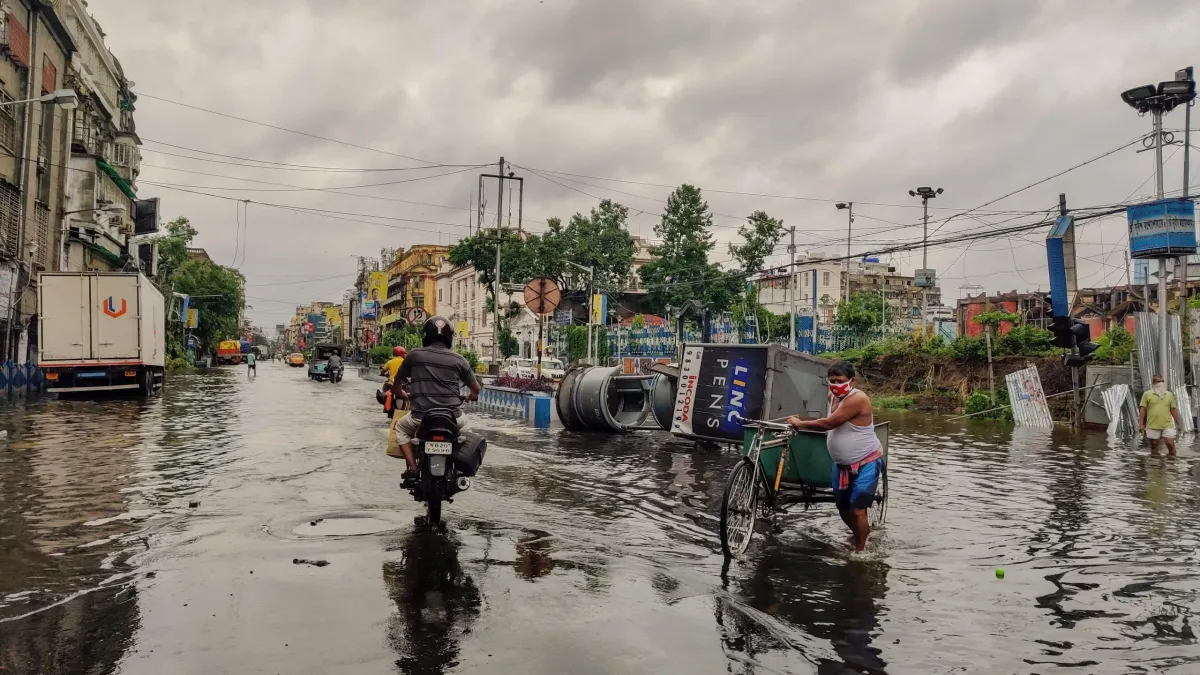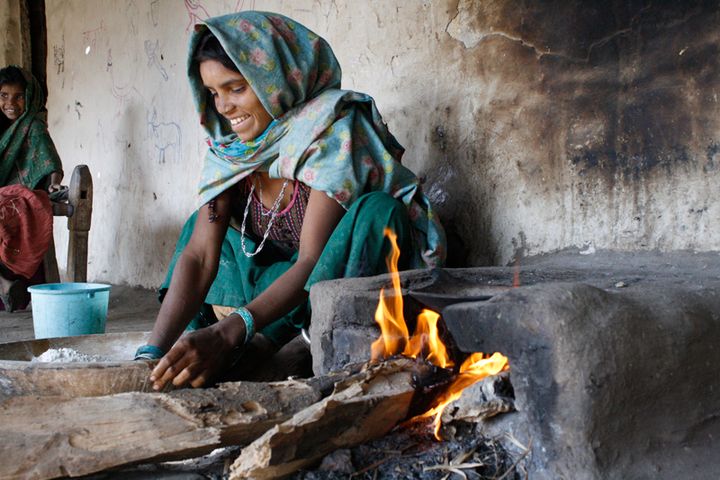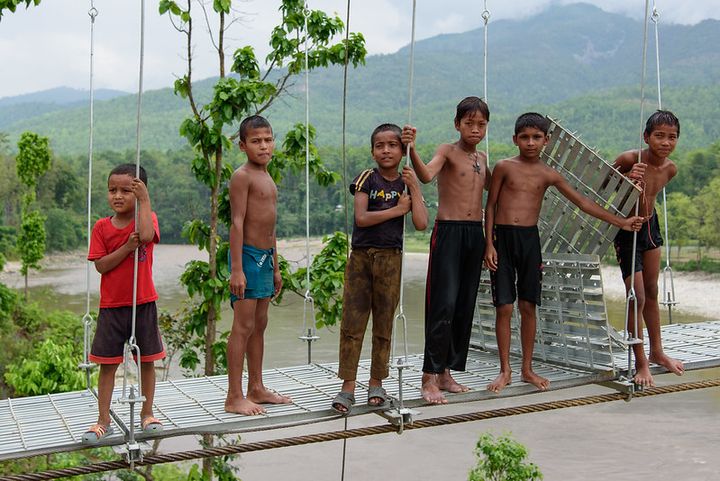The climate breaking points looming over India's big banks
Large lenders and state run energy giants are doing little to reduce their mounting climate exposure

Welcome to today’s edition of Lights On, a newsletter that brings you the key stories and exclusive intel on energy and climate change in South Asia.
A reminder that the easiest -and free - way you can support this newsletter's growth is by sharing it with your colleagues and inviting them to subscribe. You can share a link using the button below or forward this email directly. It takes a minute but it makes a big difference.
India has always been a land of brutal but predictable weather. Now the climate crisis is expected to change that, with increasingly erratic heat and water extremes unleashed at unusual times, or even simultaneously. While the country has proved to be a model of disaster preparedness in the past, the rising probability of highly disruptive compound weather events — known as black swans — represents an unprecedented risk to the economy at large. And despite the mounting warnings from experts, Indian big banks appear to be turning a blind eye.
Climate scorecard
A recent analysis offers a rare glimpse into how the largest Indian commercial banks think about climate change, finding that they are both underestimating risks to their investors and neglecting the urgency to cut their own emissions. Researchers at the Climate Risk Horizons (CRH) think tank examined publicly available information on the 34 largest banks on the Bombay Stock Exchange, representing $354 billion (INR 26.81 trillion) as of March 2021.
They found that none had a comprehensive net zero plan targeting all kinds of emissions: those an entity produces directly, known as ‘scope 1’, indirect ones related for example to energy consumption, known as ‘scope 2’, and those generated up and down the value chain, or ‘scope 3’. Only two have plans to address scope 1 and 2 emissions by the end of the decade.
There's been “very little movement” on most of the 10 criteria the study assessed, says Ashish Fernandes, CEO at CRH and an author of the study. “Especially on things like fossil fuels exclusion policies, net zero targets, and long term scenario analysis for their portfolio.”
Of the banks analysed only two, the Federal Bank and Suryoday Small Finance Bank, have chosen not to finance the construction of new coal power plants or the extension of existing ones, while Federal Bank has promised it will stop supporting oil and gas exploration. None of the banks have undertaken assessments to understand how climate change may affect their portfolios and, in turn, their investors.
Black swan events
“These issues are extremely complicated, but banks need to start looking at it because they do have economy-wide implications. You're talking about extremely large banks,” Fernandes says. “God forbid, there's a black swan event in India, or maybe two or three smaller black swan events that affect different sectors in a row,” such as a heat wave occurring during crop growing season, combined with a failed monsoon. “You’d have knock on effects not just on agriculture, but on the rural economy at large for the following years.”
‘Black swans’ are low-probability, high impact events that according to the scientists of the UN Intergovernmental Panel on Climate Change (IPCC) are going to become more frequent as global warming increases. These can be heat waves, agricultural drought or heavy rainfall of unprecedented intensity. South Asia in particular, the IPCC says, will face greater heat and humidity stress throughout the 21st century, as well as more severe rains during the monsoon season.
Economy-wide threats
“If you look at the climate projections for India, it's pretty clear that within the next couple of decades no sector is going to stay untouched,” says Fernandes. “Take energy or large infrastructure, there are going to be impacts.” Their severity will depend on each bank’s specific investments, for example “if a bank's portfolio is overly reliant on coal, or on large hydro in the Himalayas”. The construction sector will surely be affected, he says, and there are going to be significant impacts on agricultural businesses as well.
Failing to identify climate risks is particularly problematic for India and the South Asian region at large, given its high vulnerability. The UK consultancy Verisk Maplecroft ranked 576 largest cities on their environmental and climate exposure, and found that Asia is home to 99 of the 100 most vulnerable cities, of which 43 are in India. While Jakarta topped the list, Delhi ranks second — followed by Chennai, Agra and Kanpur in third, sixth and tenth place respectively.
“The Indian government lags significantly on climate action, and national greenhouse gas reduction targets are not consistent with restricting global warming within 2°C compared to pre-industrial temperatures,” says Rory Clisby, a senior analyst with Verisk Maplecroft, “so it is not surprising that both private and federally-owned Indian banks are also dragging their heels on climate risk reporting.” Investors and customers will increasingly ask these questions, he says, even if regulators don’t — and will move business to jurisdictions with more robust regulation if they don’t get the right answers.
Lessons for India's public energy giants
The need for more incisive climate action and disclosure doesn’t only apply to banks, but to most public sector energy giants too, says Balasubramanian Viswanathan, a policy adviser with the International Institute for Sustainable Development (IISD). “India’s state owned enterprises are huge entities, and they are some of the biggest financiers,” he explains. They also invest in each other: for example the State Bank of India is a major shareholder of Coal India Limited, the government-owned coal mining and refining giant.
“These companies haven't, in my view, embraced climate action to the scale and speed that the world needs and [the rest of the world] is heading towards,” he says. They are currently expanding their clean energy portfolio, Viswanathan says, but when it comes to decarbonising their fossil assets “there is no plan for thinking beyond coal”.
India’s biggest private conglomerates such as Reliance and Adani have laid out plans that will see the former achieve net zero by 2035, and the latter become the world’s largest renewable energy producer with a $70 billion investment by 2030. They are doing so by setting a long term plans and building capacity by acquiring or teaming up with specialised operators in the fields of hydrogen, batteries and more.
On the other hand, public financial institutions and energy giants are still focusing on short term goals such as avoiding energy shocks and strengthening security, and fossil fuels remain a quick fix to these issues, says Viswanathan. But time is running out. A key reason why they should act now, Viswanathan says, is that “at the moment they have a very strong balance sheet, and are able to raise a lot of capital at favourable interest rates”. But as investors' perspectives on these companies change due to their fossil-intensive assets, they will not be able to raise capital as easily, and planning for an energy transition will become much harder.
That's all for today! If you enjoy this newsletter, please share it with a friend or two:



